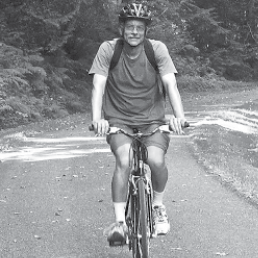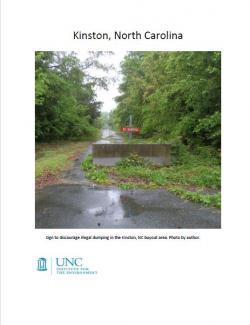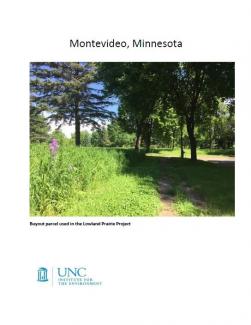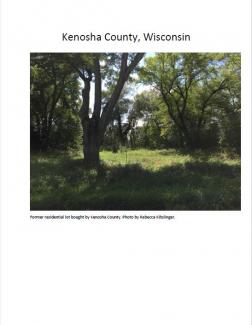Rail-Trails and the Planet

There was a time in New York, more than a century ago, when bicycling was a glamorous sport of rich daredevils—physically superior men and socially courageous women—but by the time I was growing up there, in the 1950s and 1960s, cycling had deteriorated into a low-status fringe activity, a rather pathetic transportation mode for poor people and carless immigrants. While great fun for children in parks and on beachfronts, and a source of nostalgic pride for parents standing by with band-aids and “it’s all better” hugs, bicycling on roads with cars was too scary for most people. And in the 1960s, there was no such thing as a road without cars.
Then, one Sunday in 1966, a miracle happened. New York City Mayor John Lindsay closed to cars the main loop road in Central Park. It was just one day, an experiment, but it was a revelation.
Even with cars, Central Park was a wonderland for millions of city dwellers. But very few New Yorkers had any memory of what that 843-acre mecca was like before it had become an auto speedway. Actually, asking a New Yorker to notice the cars in Central Park was like asking a fish to notice water. The cars were as much a Central Park fixture as the trees, meadows, lakes, horse buggies, and surrounding apartment towers. Timed signals kept the one-way park loop flowing so that the bursts of traffic came in reliable waves, a few minutes of roaring swoosh followed by a few seconds of silence.
That all changed with one mayoral signature. Suddenly, a thundering auto thruway—circular, six miles long, three lanes wide, with a jostling throng of yellow cabs—became a public promenade. The quiet was profound. Bird songs in the city—whoa! Who knew? Yes, there were noises— squealing children, barking dogs, transistor radios, shouting teens, the eerie continuous clicking of bicycle sprockets coasting down hills—but not the blanket dull roar of traffic punctuated by unmuffled outbursts from trucks and motorcycles. And, for cyclists, no fear of being sideswiped, forced into a guardrail, or flattened.
After my initial delight, I found many novel implications. My first surprise was that the beneficiaries were far more than just cyclists. Eliminating cars liberated an entire ecology of roadway users—walkers and runners and skaters and scooter-riders and hula-hoopers and pogo-stick bouncers and chalk-art-drawers and musicians and dancers and drummers and painters. This was, after all, New York City, with every imaginable sport, activity, art form and lifestyle. Although the wild menagerie put off the hard-core racing cyclists, and some openly longed for a return to the predictable flow of autos, most others were fascinated and charmed by the unprecedented sights, sounds and smells.
The mayor’s Central Park experiment set off firestorms of both rage and exultation. Drivers were shocked and opposed, both the professionals in taxis and the others accustomed to a pleasure outing in their cars. But the even hotter emotion—jubilation—carried the day. It was just as Jane Jacobs had pointed out in her book Death and Life of Great American Cities. After lamenting the “erosion of cities by automobiles,” she pointed out that its good twin is the “attrition of automobiles by cities.” She wrote, “Tactics are suitable which give room to other necessary and desired city uses that happen to be in competition with automobile traffic needs.”
By the 1970s, when I was ensconced in Washington, D.C., at a time when only a few hardy souls were pedaling along the edges of the avenues, the National Park Service had already looked to New York and taken the small step of closing one section of one road in Rock Creek Park to cars. It wasn’t much—one Sunday per month during the summertime—but, again, it was a revelation. Suddenly, the park’s drive felt like nothing so much as a country road deep in West Virginia, minus the three-hour trek to get there.
As in New York, it was bicyclists who had provided the initial agitation and the ongoing political muscle, but as soon as the traffic cones went up, a wider array of regular folks came out to enjoy the found space. Who were all these runners, walkers, stroller-pushers, skaters, dog-walkers, plein-air painters, and binocular-toting bird-watchers? And where had they all come from? How did they get down to this hidden valley so far from transit and from most people’s homes? These were people who had made extraordinary efforts to get there without driving.
Not all bicyclists were anti-car, but I viewed the automobile as an adversary, checkmating us every which way we turned. Besides being smelly, noisy, hot, polluting, scary, and fast, cars were, most of all, ever there and in the way. Drivers sometimes came up behind and honked; other times they passed aggressively with only inches to spare; occasionally a passenger would gesture rudely or throw something. Even when cars were parked, there was still the threat of a deadly door being flung open in my path.
I longed for more car-free places, but they didn’t exist and were almost impossible to create. Every proposal was trumped by some other group—if not drivers, then nearby home-owners; if not residents, then shopkeepers; if not taxi companies, then fire departments; if not mothers with small children, then people with disabilities. The opposition wasn’t just in the big, crowded cities, it was just as bad in sprawling, low-density suburbs. And in rural areas a car-free road wasn’t even imaginable.
Yet, against all odds, there was a glimmer of hope.
Very softly, almost subliminally, whispered messages occasionally drifted in from the Midwest, showing up in obscure columns in new age magazines or stories from friends of friends. Some town in Wisconsin or Illinois or Minnesota had taken over an abandoned railroad track and converted it into a trail. People were now biking and cross-country skiing on it. Or something like that. Well. That definitely sounded like a lark . . . in a very theoretical, far-away and generally irrelevant way. Do they bike on the wooden ties? Next to the tracks? Do they balance on the rails?
Gradually, the concept started coming into focus. It turned out that abandoned railroad tracks weren’t just an occasional fluke here or there. There were hundreds of them, thousands of them, particularly in the Midwest and the rural Northeast, backwater locations that had once supported freight trains, as well as passenger locals and even interurban trolleys, but then had been battered by economics, by trucks, cars, and buses. The demise was sad for the culture, and it was bad for the environment, but there was at least one wonderful and little-noticed aspect of the retreat of that industrial glacier—these were corridors that no car had ever laid its wheels on. In the political tug-of-war, it was the evenest playing field bicyclists would ever have a shot at. And some of those rights-of-way were dozens and scores of miles in length.
The tracks, the ties and even the underlying rock ballast all had economic value and could be profitably removed and sold. Which left the “gold” for trail lovers—the cleared corridor itself, the carefully graded route that went under or over most road crossings, traversed every river and stream, and linked every small town on the route. Of course, completing these deals wasn’t easy, and in the beginning we lost many more than we won. There were arcane ownership legalities that varied from state to state and also by the year of the original railroad’s creation.
Rail companies had merged, had bought and sold tracks, and had gone into and out of bankruptcy over the decades. The federal Interstate Commerce Commission (and later the Surface Transportation Board) had laid down heavy regulatory strictures and then had abruptly removed them under instruction from Congress. State departments of transportation were interested in some segments, and adjacent landowners and farmers were often militantly opposed to any public access. Plus, as word spread, the price tags for some corridors skyrocketed.
Fortunately, we had some strong cards in our hand as well. One was the “railbanking” statute created by Representative Phil Burton (D-Calif.) and inserted into his National Trails System Act Amendments of 1983. Passed overwhelmingly by Congress, the provision allowed old railroad corridors to not be legally abandoned but to be “banked” for possible future railroad reactivation—and to be utilized as trails in the interim. We also had the 1976 Rails-to-Trails Demonstration Grant program, created by Senator Warren Magnuson (D-WA), which led to the early development of nine particularly outstanding and influential rail-trails in nine different states. And, most important, we had a growing cadre of users who became passionate, dedicated advocates as soon as they had been exposed to a rail-trail.
When we formed the Rails-to-Trails Conservancy we didn’t know what to expect. Our visioning had been nursed by the success of the Appalachian Trail, but rail-trails are almost the polar opposite of the AT. The Appalachian Trail traverses the high country, it is rugged and remote, it meanders up, down and around, and it originally depended upon the goodwill and handshake agreements of a continuous string of landowners. Rail corridors, in contrast, wend their way through the valleys, they are essentially flat with tunnels and bridges and trestles, they run from town to town, passing through the thick of commerce, and they are locked into a very specific route by bands of steel. Still, both stimulated their users’ imaginations in the same I’m-dreaming-of-life-in-the-past-and-I-wonder-what’s-around-the-next-bend kind of way.
When we started, there were perhaps 130 rail-trails (of which we only knew a dozen, not having discovered the others yet). Today there are more than 2,000 of them, totaling about 20,000 miles (plus another 5,000 miles of connections between the corridors). Every year an estimated 225 million user-days are spent recreating, commuting, or communing with nature on rail-trails, from the eastern tip of Maine to Hawaii. And scores of new rails-to-trails campaigns are currently in progress in virtually every state.
Can rail-trails help the planet? Can their creation and use mitigate climate change and otherwise reduce mankind’s environmental impact? I think so. Every time a rail-trail is used purposefully by bike or foot as a substitute for a driving trip, it is a victory for cleaner air and reduced fossil fuel extraction. And even recreational trail rides, if they are not facilitated by an extensive auto trip to a remote location, are probably net positives in comparison to most other recreation undertaken by Americans. In the case of my family (and several others in our rail-trail-served neighborhood), the trail has enabled us to be a one-car rather than two-car family.
In a larger sense, beyond each individual pathway, the concept of rails-to-trails is good for the planet. It stimulates and reminds us to think of ways of saving, repurposing, and reusing the infrastructure in which people have already invested so much money and resources (even if it was our grandparents’ and great-grandparents’). It’s recycling on a giant scale rather than trashing and starting over. It could be a model for what we do with old roadways, abandoned airports, defunct factories, unused ports. It is turning a brownfield into a greenfield, an important amenity for the communities they serve.
There’s no doubt that the original creation of the U.S. railroad system was highly environmentally destructive, but by utilizing what is left we can help get the nation’s economy on a less growth-oriented, steadier state.
TESTIMONY These recreational corridors serve an important transportation role, keeping cars and trucks off the road as users commute, stroll, work out, shop, tour, and go about their daily business.







